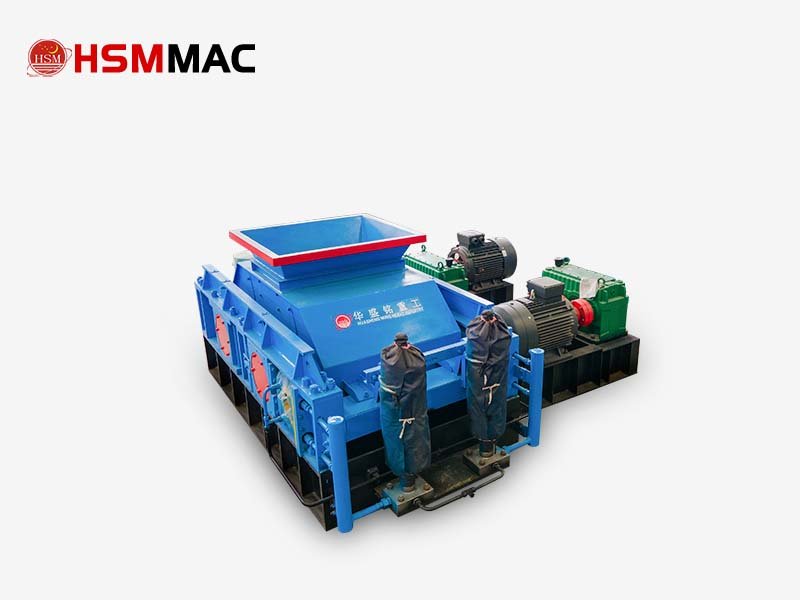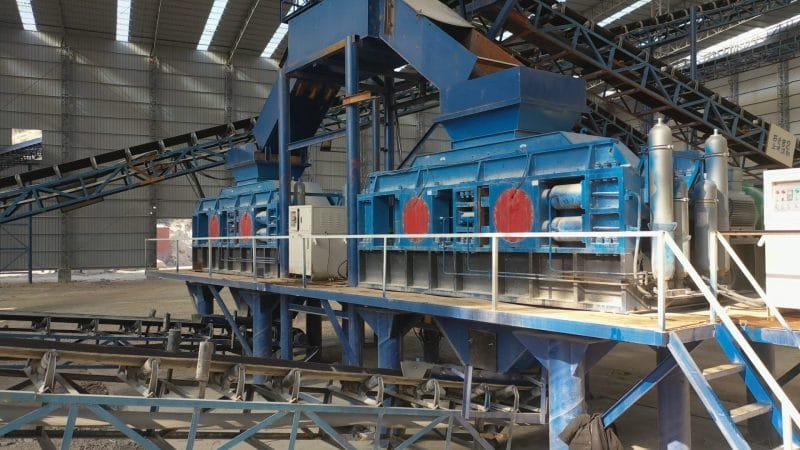The maintenance cost of hydraulic roller crusher is significantly lower than traditional crushing equipment (such as spring rollers or hammer crusher). And its advantages are mainly reflected in the structural design. Wear resistance, degree of automation and energy consumption control. The following is an analysis from the perspective of core maintenance cost components and long-term benefits:

hydraulic roll crusher
1. Equipment structure and durability: reduce the frequency of spare parts replacement
No wearing parts design
Long roller skin life: made of high manganese steel or chromium-molybdenum alloy (hardness ≥ HRC60), the roller skin is thickened to 20cm, and its service life can reach 3-5 years under normal working conditions, while the traditional spring-loaded rollers need to be replaced once every 1-2 years.
Lifelong free replacement of parts: the hydraulic system has fewer transmission parts, and the key bearings and seals are made of wear-resistant materials, which reduces the overall failure rate by more than 40%.
Hydraulic system stability
The overload protection function can automatically avoid metal foreign objects, avoiding sudden damage to the equipment and reducing the frequency of maintenance.
Hydraulic cylinder closed design, with regular oil maintenance, system life is extended by 30%.
2. Maintenance frequency and operating costs
Simplified daily maintenance
Automatic adjustment: the hydraulic system automatically adjusts the roll gap and pressure without frequent manual intervention (manual adjustment is required for spring models).
>Long maintenance cycle: daily only need to check the hydraulic oil cleanliness, oil level and filter element, every 6 months to replace the hydraulic oil (cost about 2000 yuan / time).
Short downtime
Overhaul operations such as replacing roller skins require 2-4 hours of downtime (1-2 days for traditional equipment). And the steps are standardised: power failure → pressure removal → lifting and replacing → test run.
Intelligent control system monitors failures in real time and gives early warning to reduce sudden downtime losses.

Roll crusher customer site
3. Energy Consumption and Operation Efficiency: Long-term Cost Advantages
Energy-saving design
Unit power consumption is only 0.8-1.2kWh/tonne, which is 20%-30% more energy-saving than spring roller machine (1.2-1.8kWh/tonne).
Dynamic power adjustment reduces no-load energy consumption. Saving up to 50,000-100,000 RMB in annual electricity cost (based on 100 tonnes per hour production and 10 hours per day).
Improvement of sand formation rate and production capacity
Discharge particle size error ≤3% (spring machine ≥10%). Direct output of 1-5mm fine sand, low rate of over-crushing, reducing the cost of return material processing.
The failure rate of continuous operation of models with hourly output of more than 100 tonnes is <5%, and the annual effective production time is increased by 15%-20%.
4. Maintenance recommendations and cost optimisation strategy
Hydraulic system maintenance
Use the original factory specified hydraulic oil (e.g. ISO VG46), filter impurities regularly to prevent water mixing.
Quarterly testing of fluid cleanliness (NAS Class 9 standard) to avoid spool sticking.
Wear-resistant components upgrade
Optional chrome molybdenum alloy roller skins when handling hard rock (e.g. granite), extending the life to 5 years.
Installation of discharge scraper to prevent wet material from sticking to the rollers (especially in the case of construction waste crushing).
Intelligent monitoring to increase efficiency
Access to PLC system to monitor oil pressure, current and temperature in real time, to pre-judge bearing wear and other hidden dangers.
Remote diagnosis by manufacturers (e.g. 24-hour technical support from WMS) shortens troubleshooting time.
Maintenance cost of hydraulic roll crusher is as low as 30% of traditional equipment
Hydraulic roll crusher controls the average annual maintenance cost at 3%-5% of the equipment price (e.g. annual maintenance cost of 500,000 RMB equipment is about 15,000-25,000 RMB) through ‘non-perishable design + intelligent hydraulic system’, while traditional equipment is as high as 10%-15%. Under long-term operation, its energy-saving benefits and low downtime can further dilute the cost and shorten the payback period to 1-2 years.



